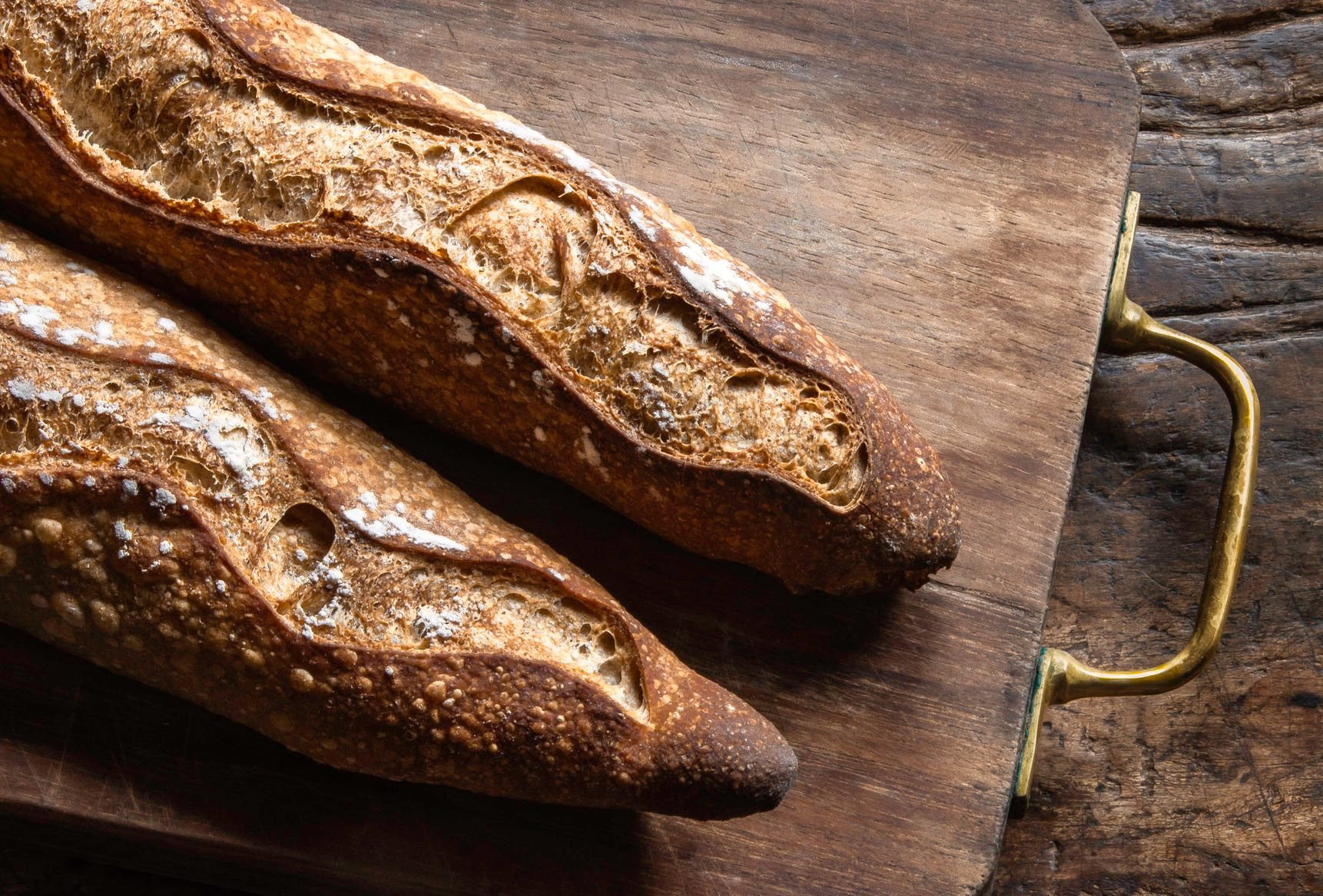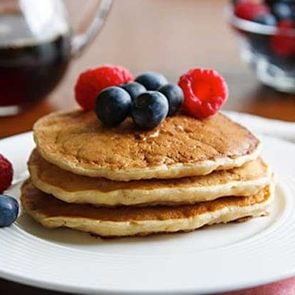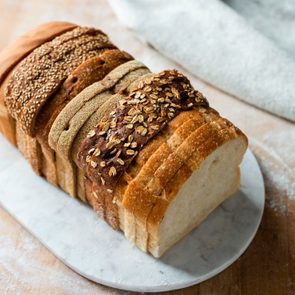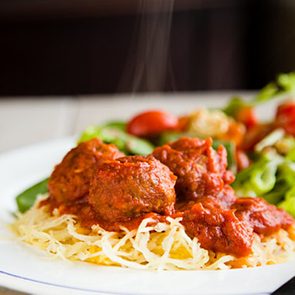Vegan Bread Is Delicious, and Here’s How to Buy, Make, and Eat It
Updated: May 06, 2021
Vegan bread is tasty and also easy to make. Whether you are looking for a vegan bread recipe, nutrition facts, or the best vegan bread you can buy, here's what you need to know about plant-based bread.
Our editors and experts handpick every product we feature. We may earn a commission from your purchases.
Veganism 101
People who follow a vegan diet omit all animal products—meat, poultry, dairy, and even honey.
You may be wondering, what can vegans eat? Is bread off-limits? Although it may seem like a restrictive diet (and for some, it can be), a vegan diet can actually be diverse and nutrient-dense. A healthy vegan diet includes fruits, vegetables, beans and legumes, nuts, seeds, and grains.
Now, if you’re thinking of veganism as plate after plate of beans and spinach, think again. Over time, as veganism has gained popularity worldwide, more and more resources now exist to help vegans create and maintain a varied and pleasurable diet.
Pizza, pasta, burgers, cakes, cookies—you name a food, and I’m willing to bet there are a dozen vegan recipes out there for it. And yes, that includes vegan bread or plant-based bread, too.
(Here are 19 tasty vegan breakfast ideas.)
What does vegan bread mean?
Is bread vegan? Well, that, of course, depends on the ingredients. Most traditional bread recipes contain flour, yeast, salt, and water—none of which are animal-based products. Therefore, most traditional bread is, in fact, vegan.
However, some bread recipes may call for eggs or milk products to change the texture, or honey to add sweetness, making them not vegan. (What is the healthiest bread?)
Types of vegan bread
Sourdough
Let’s talk about sourdough. It’s arguably the frontrunner in the category of trendiness.
Sourdough bread is a variety that doesn’t require the addition of active yeast. Instead, it includes a starter—a combination of flour, water, and lactobacillus bacteria that has sat out to ferment for a period of time.
This allows for the cultivation of wild yeast, which leavens the bread (aka makes it rise and gives it that delicious, chewy texture).
Most of the time, these are the only ingredients in a sourdough starter. This starter can be added to, and continuously used over time. However, if any milk or milk products are added to the starter, or the rest of the bread recipe, that would, of course, de-veganize the bread.
Ezekiel
Ezekiel bread is a fan favorite among vegans and is known for its protein content. Just one slice of Ezekiel bread contains about 4 grams of plant-based protein and all of the essential amino acids.
To make Ezekiel bread, wheat, barley, beans, lentils, millet, and spelt are sprouted, milled, and combined to make bread.
Ciabatta
Does this one surprise you? In general, ciabatta bread is vegan.
The standard recipe for ciabatta contains flour, water, yeast, and salt, combined in portions to give it the crusty exterior and spongey interior. Most ciabatta bread follows this recipe. However, there is always the potential that bakers may add animal products to enhance flavor or texture.
One type of ciabatta that is not vegan is ciabatta al latte. This version uses milk, which of course is not vegan. If you’re on the hunt for vegan ciabatta, I only have one pro tip for you—you must read the ingredient label.
Pita
Pita bread, just like sourdough and ciabatta, is usually vegan.
Traditional recipes call for the basic four ingredients of any bread—flour, yeast, water, and salt. But, as with the other varieties of bread we’ve discussed, there is always the potential of animal-based additions, such as butter, eggs, or milk. I’ve said it before and I’ll say it again you must read your ingredient labels.
Rye
Hands up if you’re a rye lover. Rye bread has a very unique taste, and guess what, it’s traditionally vegan. It typically includes rye flour, rye seeds, regular flour, yeast, and water. However, some bakers or manufacturers can add animal-based products, so as always, be sure to check your label.
Naan
Buttery, pillow-y naan is a true fan favorite. However, vegans beware–naan is traditionally not vegan. A staple of Indian cuisine, traditional naan recipes call for eggs and/or milk products such as milk, ghee, or yogurt.
However, naan can be vegan, by omitting the aforementioned animal products. There are tons of recipes out there for vegan versions of naan, which call for flour, yeast, water, and salt. Keep reading, I’ve got a vegan naan recipe in store for you!
(Plus, is chickpea bread healthy?)

Health benefits of vegan bread
Alright, the question you’re all waiting for: Is vegan bread or plant-based bread healthy? Is it healthier than non-vegan bread? My answer is that it depends. Despite the bad reputation bread has gotten over the years from our low-carb-obsessed society, bread can actually be super nutritious.
Fiber
One of the best qualities of vegan bread might be the fiber content.
Now, I say “might” because the fiber content depends entirely on the type of flour used. If plain all-purpose flour is used, the fiber content is going to be lame. However, if the bread ingredients are whole wheat flour or oat flour, it will pack a fiber-filled punch.
What’s more, if the bread has whole grains like barley, buckwheat, or millet, that’ll boost the fiber even higher.
As a dietitian, fiber is one of my all-time favorite nutrients. Not only does it help with satiation, but it can draw LDL cholesterol (aka “bad” cholesterol) out of the body. It’s a heart health powerhouse.
Protein
Vegan bread can also be a significant source of protein. If the bread has whole grains, it will have plant-based protein.
Remember when we talked about Ezekiel bread being a fan favorite? It’s packed with sprouted whole grains, which give us lots of protein.
That protein content will help to slow the digestion of the carbohydrates in the bread, according to research in the journal Food Chemistry. And slower digestion means we feel fuller longer.
Omega-3s
This benefit of vegan bread or plant-based bread might be surprising, but vegan bread absolutely packs some omega-3 fatty acids.
My tip is to choose vegan bread with flaxseeds and chia seeds since these pack a ton of omega-3s, which can decrease inflammation in the body and aid in heart health, according to a review in Expert Review of Clinical Pharmacology.
How to tell if bread is vegan
My No. 1 tip for discerning vegan bread from non-vegan bread is always to read the ingredient label.
Non-vegan bread will contain animal products such as eggs, milk, butter, yogurt, and/or honey.
Beware of other sneaky animal-based ingredients, such as gelatin (made from animal collagen) and whey or casein (milk-based proteins). If the bread doesn’t contain any of these, it is likely vegan.
The best store-bought vegan bread

Food for Life Ezekiel 4:9 Bread
$6
More than 6 grams of protein and 6 grams of fiber per slice? Yes, please. I also love the cinnamon raisin flavor for breakfast. I add a tablespoon of peanut butter and a sprinkle of cinnamon to it, and it’s divine.

Dave’s Killer Bread 21 Whole Grains & Seeds
$6
I love that Dave’s Killer Bread makes “thin-sliced” loaves. With a lower calorie and carb count, this is a great option for a snack or a sandwich if you don’t want to pack in as many carbs.
Be sure to combine a slice or two with lean protein, and healthy fat (mashed avocado is my go-to), and you’ve got a balanced sandwich.

Alvarado Street Bakery Sprouted Wheat Bread
$27, two-pack
This Alvarado Street Bakery bread has sprouted grains and 10 seeds which pack it with fiber, making it super satiating.
My favorite vegan bread recipe
Making your own vegan bread might sound difficult, but it’s not with this recipe for delicious vegan naan bread. Seriously, are you ready for the easiest vegan flatbread recipe you’ve ever seen?
We use this recipe weekly in my house because it’s both delicious and versatile. Here’s how to make your own.
Ingredients:
3 cups all-purpose flour
1 teaspoon salt
2 teaspoons instant yeast
1 cup warm water
1 tablespoon agave nectar
Olive oil or coconut oil for cooking
Instructions:
Sift all dry ingredients into a large mixing bowl. (Don’t skip the sifting step!)
Add the warm water and agave nectar, and mix thoroughly. If the mixture feels too stiff, you may need to add an extra splash of warm water.
Add flour to a clean surface, and place the fully mixed ball of dough on the surface. Coat your hands in flour as well, and knead the dough. Knead for about 3 minutes, until the dough forms a soft but structured ball.
Place dough in an oil-coated glass bowl. Drizzle about 1 teaspoon of oil over the dough itself, and massage dough so that the dough’s entire surface is oiled. Set bowl on the countertop for 40 minutes to rise.
When ready to cook, heat 1/2 teaspoon olive or coconut oil in a skillet over medium heat. Using a knife or a food scraper, cut the dough into 10 even-sized balls. Using a rolling pin, roll each ball out so that it is about 1/2 inch thick.
Once rolled out, place the dough (one piece at a time) in the skillet. Cook for 2 minutes per side, until each side, is golden and fully cooked.
How to eat vegan bread
For breakfast, I’ll top one of these flatbreads or a store-bought vegan bread or plant-based bread with a tablespoon of almond butter and sliced strawberries.
My kids love open-faced PB&Js on these, too. (Simply slather on peanut butter and sugar-free jam.)
Sometimes, we make non-vegan naan pizzas: Just top with marinara sauce, any and all veggies, and some cheese. Broil for 4 minutes, and voila, you have a 5-minute fun and delicious dinner. Make it vegan by swapping the cheese for a nut or plant-based alternative.
The bottom line on vegan bread
While I’m not personally a vegan, I am absolutely down with a plant-based and plant-forward diet. That’s why I’m team vegan bread. It can pack a ton of fiber and a significant amount of protein, and makes for a great addition to any diet—vegan or non-vegan!


















